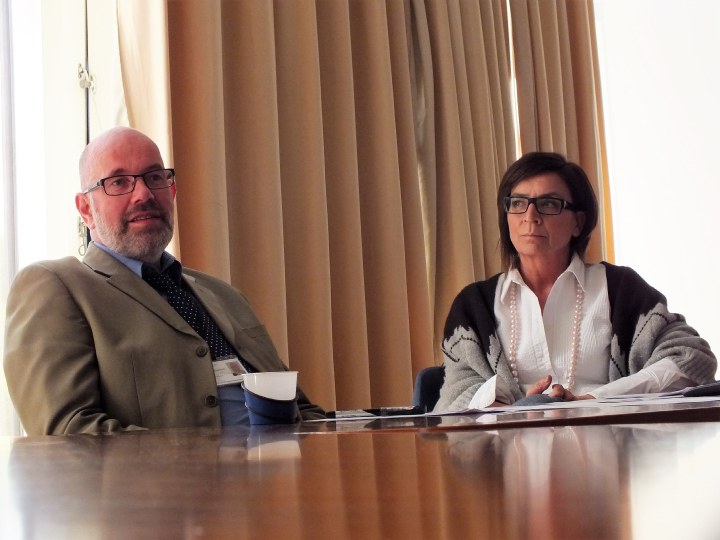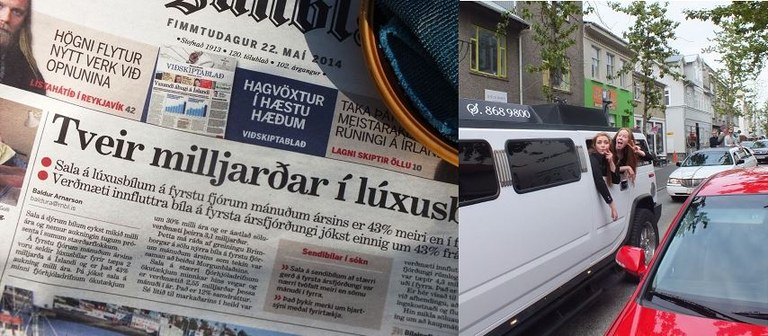Unemployment soon back to normal after eruptive increase
Anyone who’s stood frozen-fingered waiting for the Icelandic Strokkur geysir to erupt with its boiling water can imagine what it felt like at Iceland’s Directorate of Labour when unemployment figures started emerging after the 2008 crisis.
“Unemployment rose especially among the young and reached 16 percent. That’s why our first measures targeted this group,” says Gissur Pétursson, Director General for the Directorate of Labour, or Vinnumálastofnun as it is called in Icelandic.
Together with head of division Hrafnhildur Tómasdóttir he describes the current state of Iceland’s labour market for the Nordic Labour Journal. And not without a certain degree of pride:
“We perceive ourselves to be one of the institutions which have helped reduce unemployment,” he says.

In the beginning those who were developing measures to limit unemployment were fumbling. Never before had so many jobs disappeared so fast.
“We started a programme called ‘active youth’. To begin with this was activation for the sake of it, not because we believed it would help the unemployed get jobs. Those who failed to participate lost their unemployment benefit,” says Hrafnhildur Tómasdóttir.
But soon the decision was made to put major resources into training jobseekers. Iceland has long been struggling with a high number of early school leavers.
“The aim was to reduce the number of youths without further secondary education from 30 to 10 percent,” says Hrafnhildur Tómasdóttir.
One in ten of all jobseekers started studying and were given unemployment benefit while in education. This meant a new group emerged next to those who financed their studies with student loans or by working part time: salaried students.
“I am surprised it didn’t cause more of a stir. We were skating on thin ice,” comments Gissur Pétursson.
Other measures specially targeted at the long term unemployed were also brought in, but those who chose to study were the happiest.
If you walk down Laugavegur, one of Reykjavik’s busiest shopping streets, it is hard to imagine that Iceland has been through a crisis. An edition of Morgunblaðið lies on one of the many cafe tables. The top story is that the sale of luxury cars has risen by 43 percent on last year. Nearby, a group of youths celebrating their graduation are cruising in hired limousines.

Another sign that things are returning back to normal is the return of strike action. College teachers went on strike for three weeks in April and on 17 June more than 90 percent of all pre-schools will close if there is no new wage agreement.
6 - 8,000 Icelanders moved abroad during the crisis, and social benefit payments rose from 700 million Icelandic kronor in 2008 to four billion Icelandic kronor.
“But now both the fisheries and the aluminium industry are doing well - and anything else would have been strange since the Icelandic krona was devalued by 50 percent,” says Gissur Pétursson.
As a result, several of the labour market measures are being wound down, like offering summer jobs for young people. Unemployment is forecast to drop to 3.2 - 3.5 percent during the month of June.
The OECD’s latest prognosis forecasts that Iceland will have returned to normal next year:
"Economic growth was considerably more robust than expected in 2013, reflecting strong exports and buoyant tourist spending. Significant employment gains and policy decisions to reduce household debt will stimulate private consumption and further fuel the recovery in 2014. As a result, unused production capacity will disappear in the course of 2015."
 Follow us on Facebook
Follow us on Facebook
